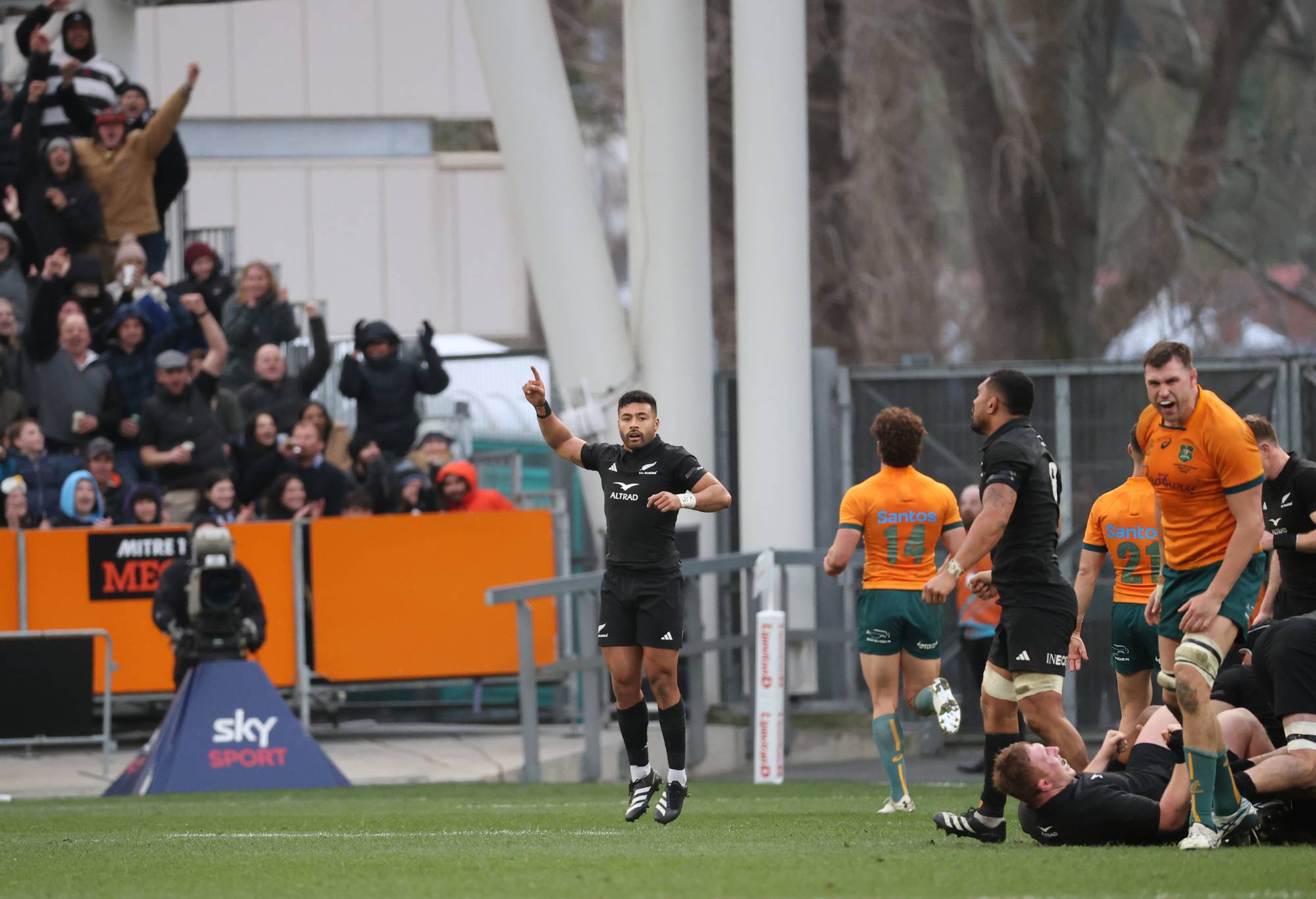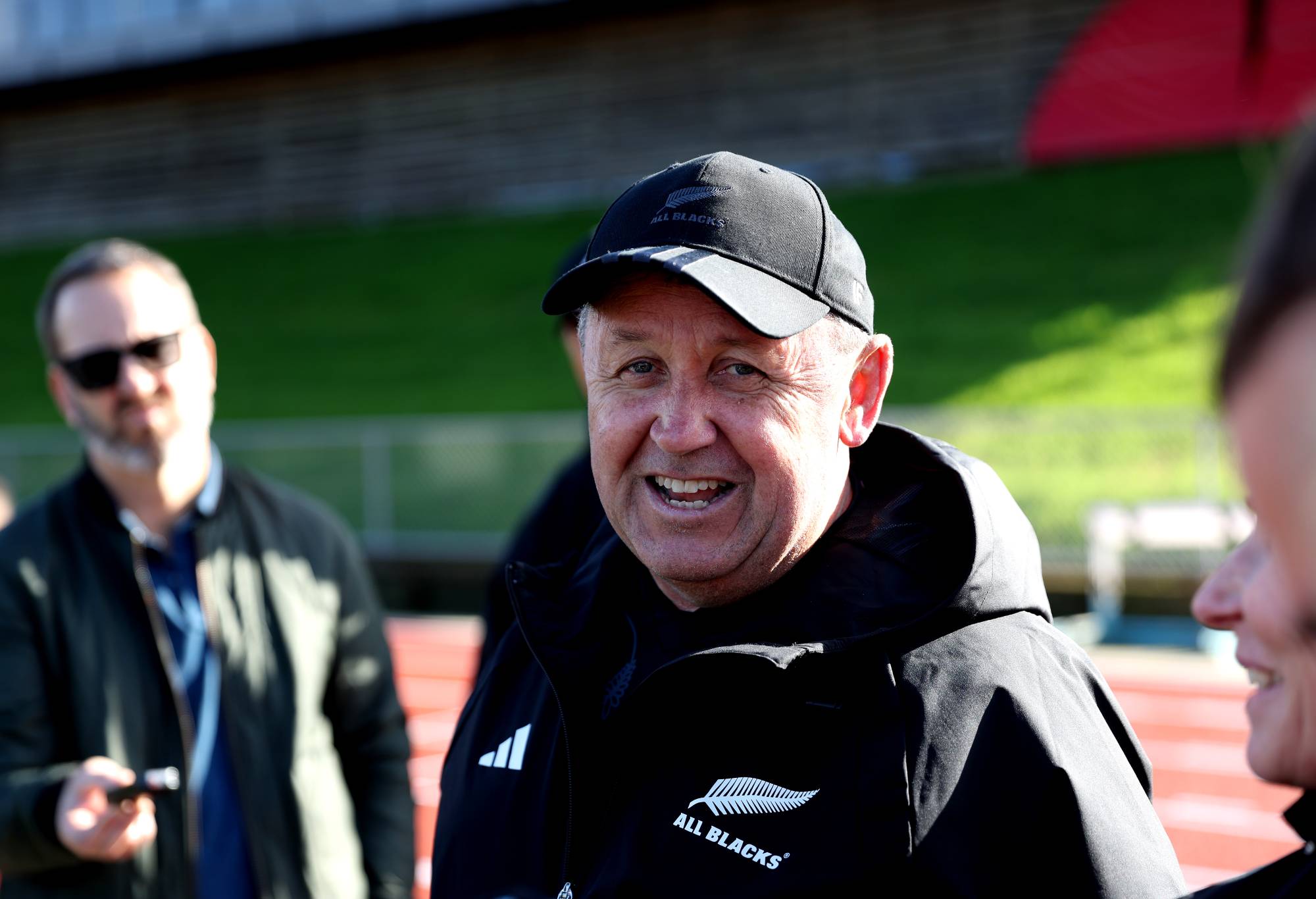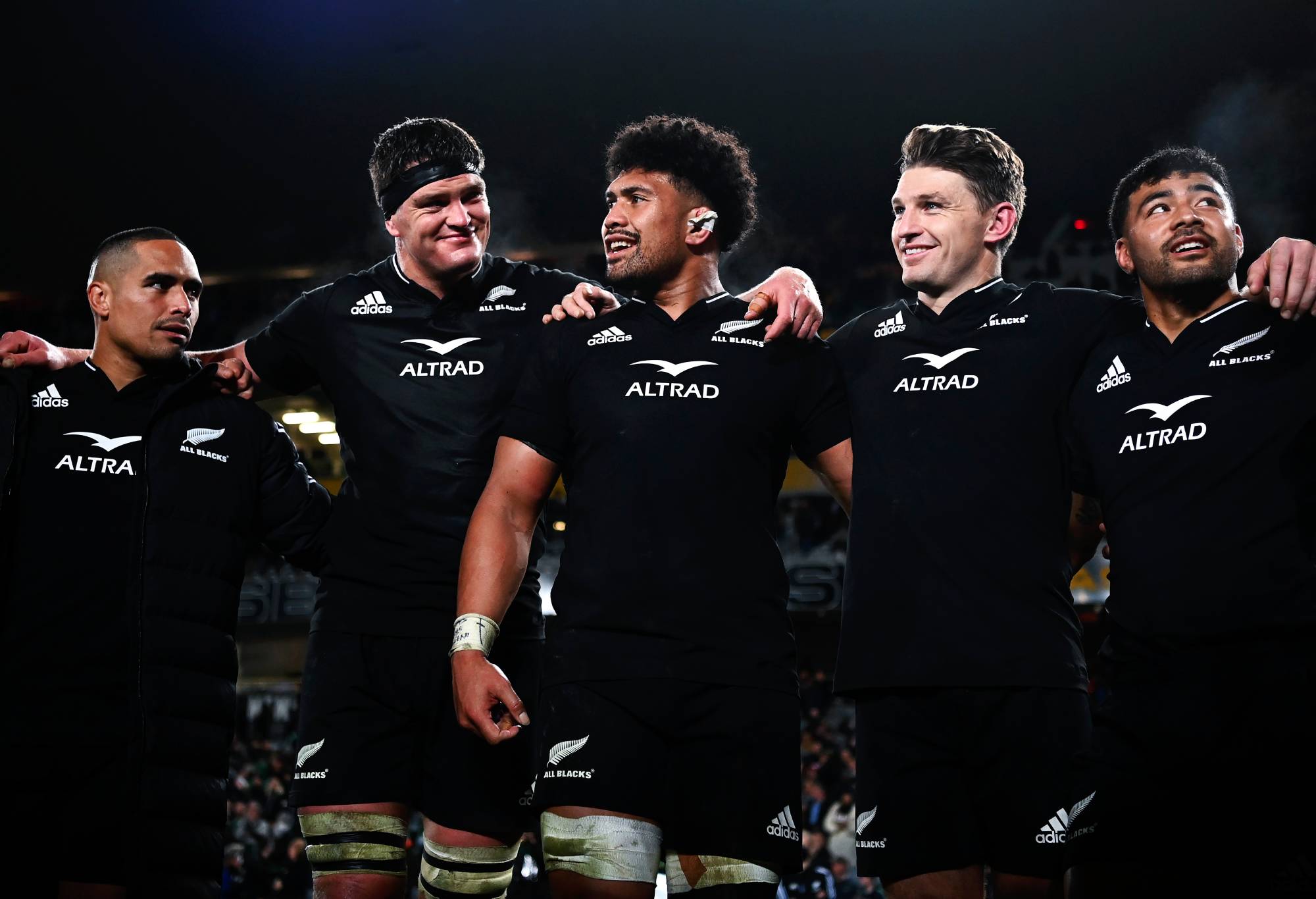Thirty-six names, a 24 hour fight and (hopefully) seven games. The first part of that equation has been entered for the All Blacks as they prepare to go and retake the World Cup off the back of four straight wins in 2023, but the feeling is that the real work starts now.
It’s not so much a question of who has been picked, because really there’s not a huge amount of surprise in the squad. That is a reason for optimism in itself – the squad is settled, it has been for a while and it feels like the woes from last year in particular feel like a long time ago now.
So, time to start planning the parade? Not quite. One bad habit crept back in on the weekend, namely a slow start that almost cost them. Had Tate McDermott or Pone Fa’amausili scored, the battle back uphill will be a lot steeper.

Richie Mo’unga kicked the All Blacks to victory at Forsyth Barr Stadium on August 05, 2023 in Dunedin. (Photo by Peter Meecham/Getty Images)
The game was won by a big scrum that led to Richie Mo’unga’s penalty, but with no disrespect to the Wallabies, the All Blacks are going to face harder tests at set piece that won’t result in that outcome very often. So the importance of setting the tone early and holding onto the ball is imperative.
The reason why All Black fans can get excited is that even though there is an injury concern to one big name player, the top XV that Ian Foster will pick are very much in form and playing good footy.
Former coach Steve Hansen remarked over the weekend that the team is shaping up to be better than the one he took to Japan four years ago. He’s definitely correct about that in a results sense so far, the Bledisloe Cup series was split 1-1 after the Wallabies sensationally drubbed the All Blacks by a record score, in a Test where Scott Barrett was sent off. The All Blacks returned the favour a week later, but while Ian Foster’s present day version ran the risk of dropping another test on the weekend, they held their nerve for a tense 23-20 win.

All Blacks coach Ian Foster named 18 forwards and 15 backs in his 33-man World Cup squad. (Photo by Phil Walter/Getty Images)
Hansen’s All Blacks also drew a game with the Springboks that year, an evening that saw neither team wanting to do particularly much as they were playing the opening match of the World Cup shortly after. There was certainly a different feeling that season, given that All Black fans were a lot easier to please given that the World Cup still resided in NZ Rugby headquarters.
So, let’s have a look at the squad that Foster has named and see why Hansen has pumped up his old mate Foster’s tyres:
Props
Ethan de Groot, Tyrel Lomax, Fletcher Newell, Tamaiti Williams, Ofa Tuungafasi, Nepo Laulala.
The front row is an area that was a problem last year, that was of course until it was solved by the outstanding form of de Groot and Lomax. On the evidence of the first four Tests of the year, those two are clearly the top of the rotation, with Newell able to make a successful return from injury just in time for the second Bledisloe Cup game. Williams had issues in his first start, but will be used against the lesser pool opponents.
Hookers
Codie Taylor, Dane Coles, Samisoni Taukei’aho
Probably the easiest selection for Foster was the well-balanced mix of solidity (Taylor), promise (Taukai’aho) and experience (Coles). Any of the three could be counted on to start a knockout match, although Taukai’aho did have a couple of lineout wobbles in Dunedin.
Locks
Scott Barrett, Brodie Retallick, Samuel Whitelock, Tupou Vaa’i
Here’s where it gets interesting because Retallick is once again injured, so while Barrett and Whitelock is a more than decent replacement pairing, it puts an awful lot of pressure on the inexperienced Vaa’i.

(Photo by Hannah Peters/Getty Images)
Loose forwards
Sam Cane (c), Ardie Savea, Luke Jacobson, Dalton Papalii, Shannon Frizell
Jacobson may well be the key here, as his bulk can take a bit of the ball carrying duties away from Savea. That might leave Papalii out of the top 23, since Vaa’i can cover both lock and blindside.
Halfbacks
Aaron Smith, Cam Roigard, Finlay Christie
Based on the selections of Roigard and Christie, Smith will likely be on the park for as long as possible. Which is the way it’s been most of the time anyway in his career, so that’s nothing new.
First fives
Richie Mo’unga, Damian McKenzie, Beauden Barrett
Mo’unga will start the big games, Barrett at fullback and McKenzie will be wearing 23. It’s as simple as that.
Midfield
Anton Lienert-Brown, Jordie Barrett, Rieko Ioane, David Havili
Barrett and Ioane are the nailed-on starters, but Havili’s return from injury and utility value could force him into the top side ahead of Lienert-Brown.
Outside backs
Caleb Clarke, Leicester Fainga’anuku, Will Jordan, Emoni Narawa, Mark Telea
This is the only odd part of Foster’s selection, which at least tracks with his odd way he’s treated the back three so far this year. Clarke’s good showing in Melbourne presumably got him in ahead of Shaun Stevenson, who went from not being picked at all to starting Bledisloe II. You could argue there are too many outside backs, but given Fainga’anuku can cover midfield that’s probably why he gets in. The Crusaders flyer has had everything fall into place for him in 2023: first signing a big money deal with Toulon and then making the All Blacks anyway.
Better than 2019? There’s no Kieran Read, Sonny Bill Williams, Ryan Crotty or Ben Smith, but you get the feeling that this side could be good enough. Just don’t say it too loud.































































































